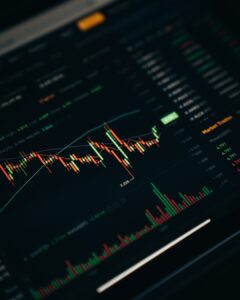The Risks and Benefits of High vs Low Forex Leverage for Novice Traders
Forex trading is a popular investment option for many individuals looking to make a profit from the fluctuations in currency exchange rates. However, it is crucial for novice traders to understand the risks associated with forex trading and the impact of leverage on their trading activities. In this article, we will explore the risks and benefits of high versus low forex leverage for novice traders.
Forex leverage refers to the ability to control a large position in the market with a relatively small amount of capital. It allows traders to amplify their potential profits, but it also significantly increases the potential losses. Novice traders are often attracted to high leverage as it offers the opportunity for substantial gains without requiring a significant initial investment. However, it is essential to understand that high leverage can expose traders to significant risks.
One of the primary risks associated with high leverage is the potential for substantial losses. When trading on high leverage, even a small adverse price movement can wipe out a trader’s entire investment. Novice traders may find it challenging to manage their emotions during periods of high volatility, leading to impulsive trading decisions that can result in severe losses. Therefore, it is crucial for novice traders to exercise caution when considering high leverage.
Another risk of high leverage is the potential for margin calls. Margin calls occur when a trader’s account balance falls below the required margin level. In such a situation, brokers may require traders to deposit additional funds into their accounts to maintain their positions. Failure to meet margin calls can result in the liquidation of positions, leading to further losses. Novice traders should be aware of the possibility of margin calls and ensure they have sufficient funds to cover potential losses.
While high leverage comes with significant risks, it also offers potential benefits for novice traders. One of the main advantages of high leverage is the ability to make substantial profits with a small initial investment. This can be particularly appealing to beginners who may not have a large amount of capital to allocate to trading activities. With high leverage, traders can access larger positions and potentially earn higher returns.
Moreover, high leverage allows traders to diversify their trading strategies and take advantage of various currency pairs. By using leverage, novice traders can simultaneously trade multiple currency pairs and potentially increase their chances of making profitable trades. However, it is important to note that diversification does not guarantee profits and should be approached with caution.
On the other hand, low leverage offers a more conservative approach to forex trading. While it may limit the potential for extraordinary profits, it also reduces the risk of significant losses. Novice traders who are not yet comfortable with the volatility and unpredictability of the forex market may find low leverage to be a more suitable option. With low leverage, traders have more control over their positions and can better manage their risk exposure.
In addition, low leverage allows novice traders to focus on learning and developing their trading skills without the added pressure of high leverage risks. It provides an opportunity to understand the intricacies of the forex market, test different trading strategies, and gain experience without the fear of losing significant amounts of money. As traders become more proficient and confident, they can gradually increase their leverage levels.
In conclusion, both high and low leverage carry their own set of risks and benefits for novice forex traders. High leverage offers the potential for significant profits but also exposes traders to substantial losses and margin calls. Novice traders should exercise caution and ensure they have sufficient funds to cover potential losses before considering high leverage. On the other hand, low leverage provides a more conservative approach, limiting potential profits but also reducing the risk of significant losses. Ultimately, the choice between high and low leverage should be based on an individual’s risk tolerance, trading goals, and level of experience in the forex market.





